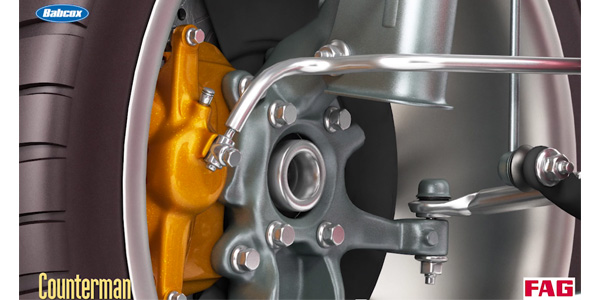This video is sponsored by FAG.
Like many vehicle parts and components, wheel bearings have evolved over the years. Until the 1960s, single-row bearings arranged in pairs were the norm. Over time, they’ve given way to compact wheel-bearing units, which have been designed to take on more functions of the surrounding components, such as the flange, multi-pole encoder and seals.
The first generation of compact wheel-bearing units don’t have a flange. In most cases, they’re fitted to the steering knuckle when used on the front axle, where the outer ring is fixed in the bearing seat.
Generation 2 wheel bearings have a flange, which takes the form of a wheel hub or mounting flange on the axle carrier.
Generation 3 takes it a step further, combining both flanges. One serves as the wheel hub, while the other secures the bearing unit to the axle carrier. That makes life a lot easier for repair shops, as the wheel bearing simply has to be screwed to the steering knuckle for assembly.
All of these changes are good for vehicle owners too. Prior to the introduction of compact wheel-bearing units, wheel bearings were serviceable and had to be removed, cleaned, inspected and repacked with wheel-bearing grease every few years. On the other hand, these newer generations of wheel bearings are sealed, pre-greased and maintenance-free. Wheel bearings can last 200,000 miles or more under normal driving conditions, and many will last the entire life of the vehicle without failing.
In the next video, we’ll talk about bearing clearance and bearing play, and why they’re important.












